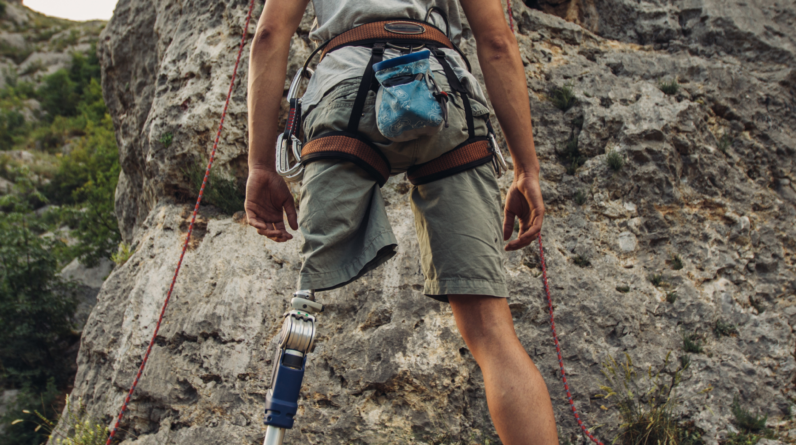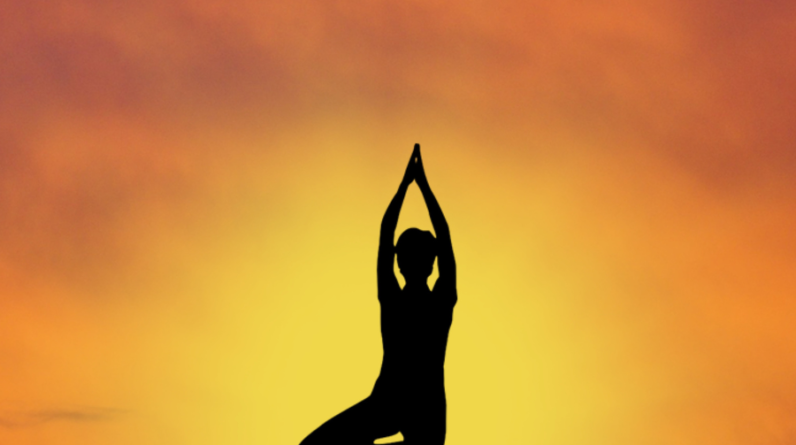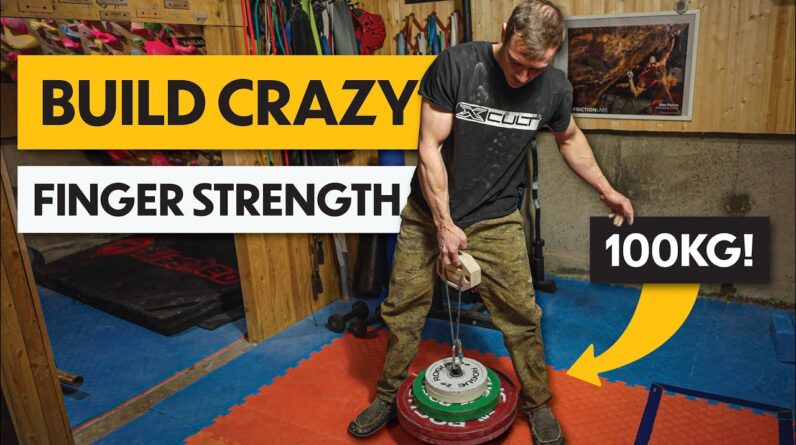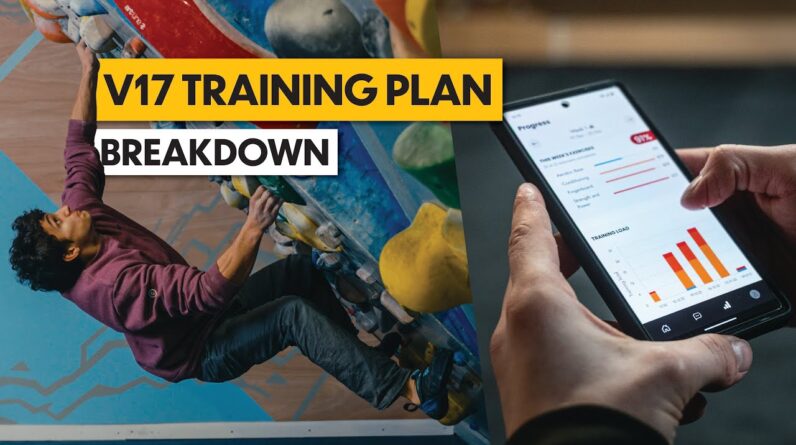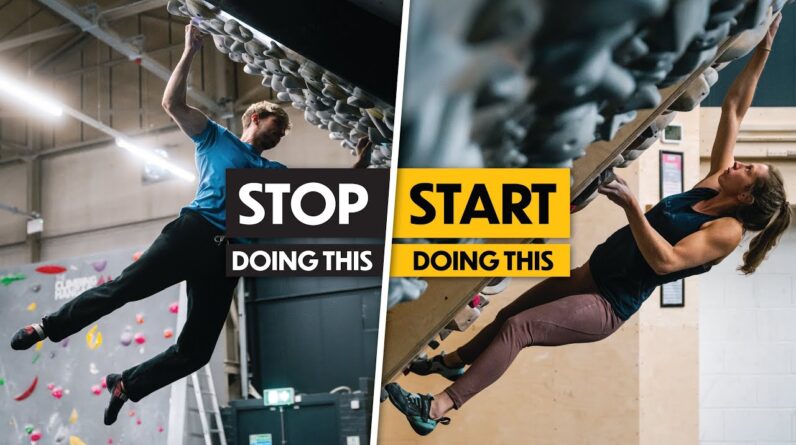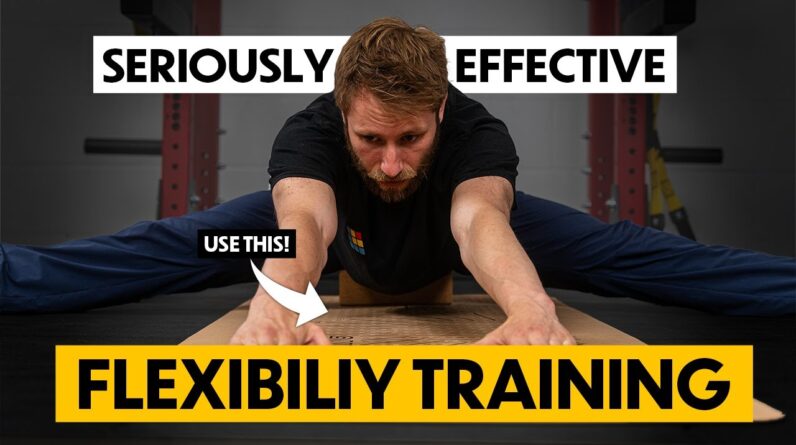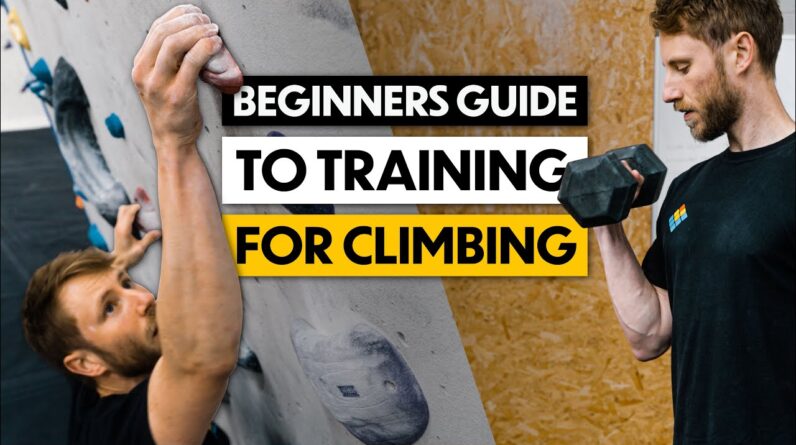
If it’s your first year or two of climbing or you are just starting to get serious about getting better and stronger at climbing, this video might hold some invaluable lessons for you. Helping you get on the right trajectory to reach your potential. In this video we are showing you what we think are some of the biggest strategies new or beginner level climbers should be using to get the most performance out of their time training.
In the first part we discuss what you can do in your climbing time. It is not that you need to overly structure your climbing but the climbing you do should be deliberate and thoughtful. We talk through the tactics that help you build good skills and helpful habits.
The second part is discussing how to build finger strength as a beginner. You may already know that finger strength is a big part of performance in climbing and therefore something you don’t want to neglect for too long. Climbing will do a lot for training finger strength but we discuss how to do this effectively and when a hangboard is appropriate.
The final part is S&C (strength and conditioning). We don’t think S&C should be added just for the sake of getting stronger for climbing, but it should be added for all climbers to reduce injury risk and longevity in climbing, especially if you are climbing at your limit. Less bumps along the way in the early years will set you up for more success and a better experience.
Hang boarding warm-ups pull-ups Technique sessions if you’re relatively New to climbing there are loads of Options when it comes to training so Where do you start In today’s episode we’re talking about What you should be doing in the first Year or two of your climbing because This is a really exciting time when Progression is fast however the Decisions you make now will affect your Trajectory in the future [Music] We’re here today at the depot sheffield And we’re going to be covering what we Think are some of the most important Tactics and training ideas that you Should be making in the first year or Two of your climbing in the first part Of this video we are going to cover the Climbing itself now climbing first and Foremost is a skill sport so the most Important part of this video and the Most important part of your training is The skill acquisition this is learning The skills and movements of climbing You’re going to need to learn how to Visualize movement build body awareness And problem solve to do this it’s quite Simple you’re going to need to do a lot Of climbing what this means is if you Can only get to the gym or climbing wall Two maybe three times a week you’re Going to want to spend most of your time
Simply climbing we’re looking at Building up a large volume of climbing And climbing movement within those Sessions of course there will be an Upper limit to how much you can recover From in these sessions however if you Feel like you’re getting tired simply Move to the easier terrain where you can Handle more volume there is still a lot Of learning and skill acquisition to be Done on this easier train as long as You’re thoughtful about your movement The next part of this is you need a Breadth of climbing styles not just a Depth of volume this means climbing on All sorts of terrain slabs overhangs Roofs do it all it’s all good for your Movement and skill acquisition climb With others whenever possible take Advantage of the social side of climbing To start with you’re going to be able to Learn a lot from these other people Watch what they do learn from their Techniques and pay particular attention To people that are good at styles that You are not so good at you will also Reap the benefit of how good the social Aspect is for your mental well-being if You’ve not got partners to go to the gym With try talking to others asking people How they did things or for advice on Your clients you might learn something But even if you don’t you might make a Friend along the way it’s about the way
You do it not that you have done it Climb things several times over and be Inquisitive about how you can refine Your movement and get better at doing Those climbs this is one of the best Ways to learn good technique because It’s not about being to execute a Technique like a drop knee or a heel Hook it’s about being able to execute That technique well and with efficiency So go back through the climbs and see if You can form the technique better than You did the first time learn good Tactics good climbers utilize good Tactics to get the most out of what they Have in their climbing however tactics Are like habits and habits should be Learned as early on as possible some of The big hitters here are brushing holds Especially on anything which is going to Require friction like pinches and Slopers resting just a little longer Than you think you need to so that each Attempt is great quality especially if On the harder climbs and warming up Properly this includes some general Flexibility of the lower body and Activating the muscles in the upper body To help with your movement in your Sessions learn to root read climbing is More than just physical it’s a highly Cognitive sport one of the best ways to Learn to root route is obviously through Experience making mistakes is going to
Happen but it’s not a bad thing as long As you can learn from this that’s why Reflecting on that climb is so important Here are a few exercises that can really Help with that root reading skill the First one is the second go red point This means if you make a mistake you’re Going to try and reflect on that and Correct it for your second attempt the Next is a flash or on-site attempt this Is going to put your root reading skills To the test and here the aim is sending It perfectly first go also try to act Out off the wall in this way you’re Going to bridge that mind-body Connection to your movement the last one Is place yourself in the shoes of the Root setter normally they have place to Hold very deliberately in a certain Orientation try to see how they intended For you to do that move in your first Year of climbing we believe open Climbing sessions is going to take up Most of your climbing time this means Unstructured sessions you’re not Following any training program at this Point this is going to keep your Climbing more varied and is an excellent Way to learn new skills for climbing However you need to be mindful at the Same time so within these open sessions Try to incorporate all of the tactics And lessons we’ve just mentioned [Music]
First time you start to seriously think About training for climbing other than The climbing itself finger strength is Probably the main thing that comes to Mind and for good reason finger strength Is obviously very important for climbing To start with your finger strength Should primarily be developed on the Wall and in your climbing as you Progress through harder climbs your Finger strength will increase this is The first approach to building finger Strength because it doubles up with your Skill acquisition and also your upper Body strength training starting with Hangball training too soon will increase Your training volume and initially Reduce your recovery capacity which may Limit the quality of your skill Acquisition sessions which we have Discussed is the main priority in your First year of climbing to get more out Of your finger strength with climbing on The wall be conscious to vary your grip Types as a beginner you may Automatically favor a certain grip type However learning to use different grip Types on different holds is very similar To like learning good footwork get used To using different grip types and be Patient if some of those take longer to Feel natural you can absolutely start Hang boarding as a beginner however There are some considerations that we
First need to cover First is check your ego the fingerboard Is supplementary to your climbing is Supposed to aid it it shouldn’t become a Race for finger strength gains and an Accomplishment in itself we could argue That hangboarding is more safe than Climbing we can keep it super controlled We can keep our feet on the ground we Can load it slowly and we can let go Whenever we want however we need to keep It light and not use really heavy loads Or that intensity as we’re starting off Maxing out on a hang board at this stage Is going to tip the scales in that risk Versus reward as a beginner your main Objective with hang boarding is to Develop training capacity and longevity Over maximum strength longer but lighter Hangs for example 20 seconds but maybe Keeping a foot on the floor so it Doesn’t feel too intense is a great way Of developing the connective tissue in The fingers like your tendons and Ligaments as you may know tendon and Ligament injuries in the hand are really Common in climbing but the hang ward can Be a great tool for reducing the risk of These injuries and building up your Training tolerance these structures that Is the tendons and ligaments may take up To five times longer to develop than the Muscular strength in your forearms and As a new climber or a beginner
Especially new to the hangboard your Strength gains might be very rapid or Quick but we need to take a slow and Steady approach so that we build up the Connective tissue alongside slow and Steady wins every time we’re not going To go into any specific hang boarding Sessions in this video to be honest it’s Too specific and needs to be set to the Individual’s needs so if you’re at the Stage where you think hangboarding might Be needed for your progression it’s easy Enough to talk to a coach or find an Experienced trainer to give you some Advice [Music] Strength training off the wall might Seem like a distraction from all of that Skill acquisition on the wall we were Discussing earlier however basic Strength training in the early stages of Climbing is really important i’ve come Across many new climbers which seem to Come up with pains or niggles in their Shoulders or elbows and this kind of Rate of injury might even be increasing With the new Modern route setting the macro style Holds where finger strength is less Needed but pressing and hard pulling is Even more needed doing some basic Strength and conditioning outside of Your climbing is going to help Strengthen these muscles the tendons and
Ligaments around those joints and help Build up your training tolerance and Your capacity for your climbing building Strength can also aid in how well you Can execute certain techniques for Example a twist lock is going to require Strength in your upper body and core Tension to begin with you can’t go wrong With pull-ups and press-ups these two Exercises are going to cover most of the Muscles in the upper body and help build Your tolerance to all of that climbing You’re throwing at it done with good Form they’re going to reduce your risk Of injury on the climbing wall shoulder Press bicep curls low rows face pulls These are all excellent examples of Supplementary exercises which you could Add to your training of course there are Many other options however if you’re Already doing a lot of climbing and You’re doing things like pull-ups Press-ups you need to question whether More it’s going to be better for your Climbing remember we need to balance Your training volume and your recovery Capacity so in your first couple years Of climbing these exercises definitely Go into the maybe pile basic floor core Exercises often get a bad rep for not Being climbing specific however at this Stage don’t get too hung up on really Climbing specific exercises you’re Really trying to become a general
Athlete at this stage become healthy and Improve your longevity in climbing they Are also super convenient because most People can do these at home things like Spider-man holds dish tucks moving Planks these are going to build up your General core conditioning and stability They will also help you brace tension Between your hands and feet on the wall To summarize with the strength and Conditioning you should be adding this Into your routine to build up your Overall capacity to tolerate training And also to reduce the risk of picking Up injuries in doing so you’ll be able To do more climbing learn more skills Without any forced breaks due to injury Start with the basics like pull-ups and Press-ups and these can be squeezed onto The end of your session after you’ve Done all of that skill-based work in Your climbing that’s it from our Beginner’s guide to training for Climbing if you enjoyed this video Please like and subscribe and we’ll see You next time [Music]

